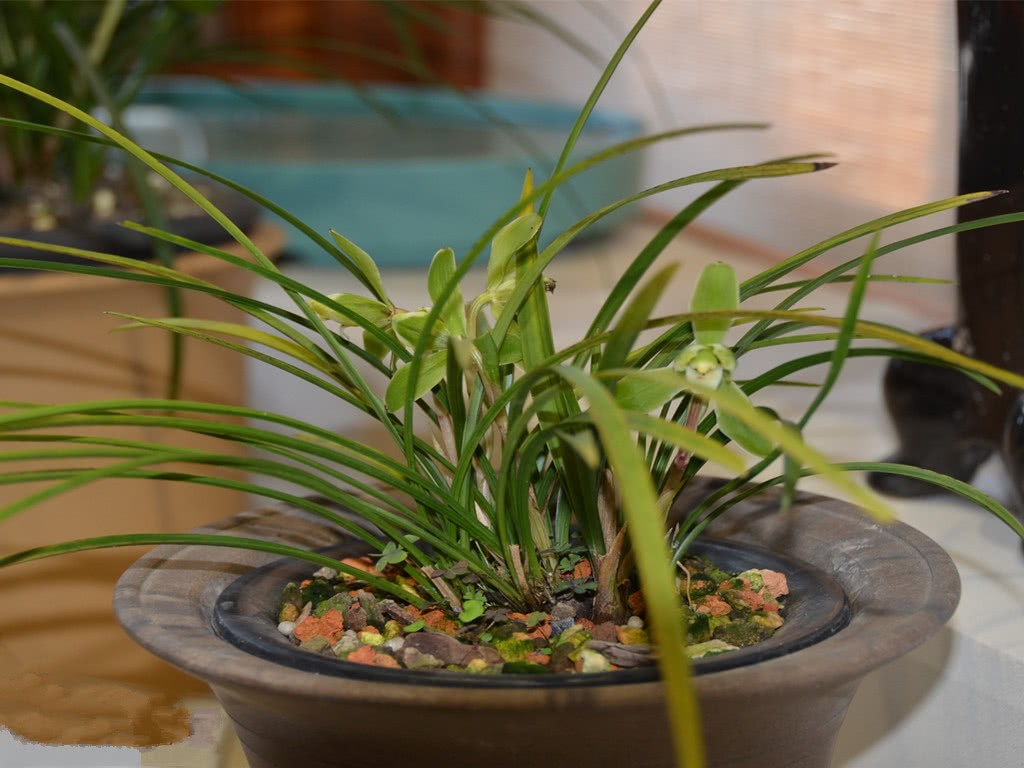Can foodie repel invasive species? Stupid humans are clothes.

Today's species calendar introduces hairy crabs. At the end of the article, we say that hairy crabs have become an invasive species in Europe and the United States. You may be surprised that hairy crabs can still cause headaches? Isn't it solved by sending a Chinese food delegation in minutes?
In the early years, there were also popular rumors such as "818 alien species invading the binge-eating empire":
Indeed, there are many cases of raw (delicious) invasions like hairy crabs and crayfish. Can China's foodie send invasive creatures that make other countries' headaches to their graves and save the world?
The answer is: no.
Not to mention whether we can eliminate invasive species from other countries in the world, just invasive species from China. According to the data from China's alien invasive species database and the Foreign invasive Biological Prevention and Control Research Center of the Ministry of Agriculture, there are 754 species of invasive organisms recorded in China, with an estimated annual economic loss of more than 120 billion. Foodies solve the problem of alien invasive species? You guys are so naive.
What is an invasive species?
Invasive species (Invasive species) is a subset of introduced species. If a species is artificially introduced into an area where it has never existed naturally before, and has the ability to develop into a certain number there without more human intervention, so as to threaten the local biodiversity to become a local public hazard, it can be called an "invasive species".
A species is not an invasive creature at all times. Tragicomedy of species change has been played out in the global ecosystem for tens of millions of years, but this process is slow and can only happen under natural conditions. And humans have changed all that.
Cooked marbled crayfish sold on the Madagascar market for human consumption. Photo Source: Ranja Andriantsoa
Humans have an unprecedented species mobility advantage: transportation. This makes it easy for some species to hitch a ride to strange corners they have never reached before. A large number of introduced species are faced with an environment that they cannot adapt to in the short term. Human beings take the initiative to introduce exotic species for some economic purpose, and people often have to take the initiative to create suitable habitats for them in order to survive.
But a small number of species have come to their new world with the help of human power, and this new environment is unexpectedly suitable for them to survive, so they can live well without human beings. Once escaped from human control, the factors that curb the growth of their populations are completely gone, then these species will become runaway wild horses to form wild populations. or through those potential survival advantages to quantitatively encroach on the living space and resources of native species, or feed on native species directly, or can secrete toxins and other means to inhibit the survival of native species.
Asian carp in the Mari Banon River in Australia. Picture: Vaderluck / wiki commons
At the same time, invasive species are not necessarily born with sharp teeth and are fully armed to destroy all other living things. Species whose populations are effectively suppressed in one place may become invasive species in places with different environmental factors.
After familiarizing ourselves with these basic concepts, let's analyze several cases.
The invasion began because of foodie.
First, let's take a look at the American bullfrog (Rana catesbeiana), Pomacea canaliculata and tilapia. The invasion of these creatures is caused by the blind introduction of alien species as food regardless of market capacity.
To put it simply, the reason why these species have become alien invaders in China is precisely due to the fact that the original importers overestimated the combat effectiveness of Chinese foodies and the lack of effective breeding control and environmental isolation.
The American bullfrog is native to North America and is called bullfrog in the United States. It is named after the rugged, low-pitched sound of a cow during mating. Bullfrog is not only the largest existing frog in North America, but also has a tough personality and a good appetite. Its diet goes far beyond the insects, snakes, rats, fish, turtles and crayfish eaten by ordinary frogs. Any living thing it can catch includes even a variety of birds. Even its tadpoles pose a threat to the small fish in the water body.
The big tadpole of the bullfrog. Picture: californiaherps.com
Because of the extensive farming conditions and the fact that people had no sense of control over the introduction of animals in the early days, bullfrogs fled to the wild early in Asia and became wild species and invaders. It is recorded that bullfrogs invaded China in 1959, entering from Hong Kong, but the larger invasion was "special farming" in various parts of southern China after the economic opening up in the 1980s and 1990s. a large number of strange animals and plants are regarded as the golden key to getting rich, and bullfrog is one of them. However, compared with native wild frogs in China, such as thorn-breasted frog, tiger-striped frog and black-spotted frog, the meat of bullfrog was too coarse to enter the eyes of gluttonous people, so it did not sell well at the beginning. As a result, a large number of breeding sites were abandoned, and escaped American bullfrogs replaced many native frogs.
Similar to this is the longevity snail. Oncomelania hupensis, which comes from the Amazon River in South America, was introduced into Taiwan as a food in the 1970s and was discarded in large quantities because of its poor meat quality. After the 1980s, the mainland did not learn a lesson, and the consequence of its introduction was to repeat the same mistake. Because of its strong reproductive ability, Oncomelania hupensis is now found in almost all the water bodies in South China.
The egg mass of the longevity snail. Picture: floridatimeforgot.com
If poor taste is a reason to barely forgive foodies, tilapia has become an invasive species more because of cultural tradition and low acceptance.
In fact, tilapia is not only a kind of fish, but a general term for many kinds of farmed fish introduced into China, such as Oreochromis of Ligustrum and Tilapia of African crucian carp. With fresh and tender meat and a wide range of eating habits, they are recommended by the United Nations Food Program as a source of protein, and there are institutions for breeding in the United States, Israel and India.
Tilapia. Picture: fishbase.se
But in China, its problem is acceptance. Because the appearance is completely different from the four traditional farmed and edible fish, coupled with the rapid growth of tilapia, it is regarded as "raised by dung water" by some non-recipients. This view (or bias) not only causes farming failures and species escape in some places, but also prevents tilapia from being caught in the wild, causing a wider invasion.
Some rumored cases of invasion
The invasion of beavers (Myocastor coypus), which had little to do with foodie, was first introduced to China from the Soviet Union as fur beasts, also became a specialty breeding boom after the 1980s, and then escaped from the wild to become invasive species. At present, the beaver meat and processed products we can see in markets or restaurants come from farming, because the cost of raising beavers is lower than that of wild capture, and the wild population of beavers in China is not so large that they can be easily captured. Their invasion harm mainly lies in the destruction of dams and crops.
Beaver. Picture: Alpsdake / wiki commons
Spring chrysanthemum (Anthemis tinctoria), chrysanthemum (Chrysanthemum coronarium) and wild chrysanthemum (Gynura crepidioides) also appear in the list of alien invasive species, but they are not on the list of serious hazards. In fact, some of the flowers we are familiar with, such as marigold, Qiuying and cornflower, are among them, meaning that there is evidence that they have established wild populations, but have not caused serious economic and ecological harm.
Interestingly, many people's concept of invasive species was established through two so-called "cannibal Pomfret incidents" and the panic and media attention they caused, which were later proved and regarded as a farce. "Pomfret" generally refers to a variety of fish with sharp teeth, gregarious and carnivorous habits under the subfamily Cyprinidae. What is clear at present is that there is no definite information indicating that any "cannibal Pomfret" has established a population in the wild in China, and no "cannibal Pomfret" has been included in the list of alien invasive species in China. A very simple fact is that the "cannibal Pomfret" is very sensitive to temperature, even if some of the "cannibal Pomfret" escape into the freshwater body of our country, on the one hand, they cannot establish a population, and on the other hand, they cannot survive the winter.
Like this Weibo.
However, some fish under the order Cyprinus carpio have been introduced into aquaculture. They all belong to the genus Cyprinus Carpio, and the market name is generally called Freshwater White Pomfret. One of the fine-scale fat carp (Piaractus mesopotamicus) has entered the data of alien invasive species in China and has often become the object of misreporting "cannibal Pomfret" in various places. In any case, they are omnivorous fish, tasty and non-aggressive. The impact on the environment is discussed separately, and foodies might as well give it a try.
Rumors are not limited to China.
There is also a rumor about the invasion of light vegetables into Western Europe and North America, which is roughly accurate, but this invasive species is not light vegetables, but zebra mussels (Dreissena polymorpha).
Zebra mussel originated from the Caspian Sea and the Black Sea. As human ships were brought to the ports of Britain, Ireland, Spain and other countries in Western Europe in the first half of the 19th century, because of their strong attachment and breeding ability, they caused damage to local port facilities and invaded to the Netherlands, the Czech Republic and Sweden, and reached Italy in 1973. In 1988, it was first found in Windsor, Canada and Detroit, USA, and zebra mussels spread wildly across the Great Lakes for decades. Their harm to the ecology is mainly due to the rapid and uncontrollable reproduction, which is enough to change the energy flow of the ecosystem. And because of its potential to enrich toxins and pollutants, experts do not recommend eating zebra mussels (although they can be eaten). The United States spends $500 million a year to control the spread of zebra mussels.
The zebra mussel of the Netherlands. Picture: Bj.schoenmakers / wiki commons
On the other hand, the shellfish, which we call light vegetables, are many species of the mussel family that live on the coast of East Asia. Although sometimes they can also cause damage to seaport facilities, because they are native species and are effectively controlled by other creatures, they do not cause serious problems.
Unfortunately, foodie can't save the world.
So far, the error analysis of the classic case of "foodie saves invasive species" you may have heard is over, but in a broader sense, invasive species are far from a problem that can be solved by human "eating".
Take the situation in China as an example, of the 754 recorded invasive organisms, 134 are various microbial plant diseases, the vast majority of animals are insects, and most of the plants are unedible. As the "foodie" of human beings, we are so unusable that we can use it to expand our thinking and use the "foodie" of other species to help us solve our problems, that is, the so-called "biological control".
Striving to maintain the status quo of the environment while developing the economy is the best strategy for mankind to continue civilization, so trying to control the number and types of invasive species, together with environmental protection, should be a means of civilization continuation.
This article was first published in the fruit shell, from the author of the species calendar @ Uncle Zhong.
Want to know more
The game between invasive species and humans
Reply "bullfrog" and show you four kinds of invading raw (beautiful) things (taste)
Reply to "White Moth" and show you why the Customs cares so much about you.
Calendar Niang today's avatar
The marbled crayfish of the family Eriocheir sinensis
- Prev

Put a handful of sand in the consolidation pot of flower-growing soil. Flowers and plants grow vigorously and blossom.
Raising a few pots of flowers at home makes the mood very good. For people who like to grow flowers and often grow flowers, they will encounter such a situation, that is, after potted cultivation for a year or two, the soil is very easy to harden and the soil is solid.
- Next

The orchid potted plant grows 2 centimeters crazy in one night. Wife: your son has the most say.
The orchid potted plant grows 2 centimeters crazy in one night, which makes people worry. Wife: your son has the most say! The strong growth of orchids is the voice of every one of us who maintain orchids. This not only saves us worry and time, but also has a sense of success and.
Related
- Wuhan Hospital Iron Tree Blooming Result Was Instantly Frightened by the Gardener Master
- Which variety of camellia is the most fragrant and best? Which one do you like best?
- What is the small blue coat, the breeding methods and matters needing attention of the succulent plant
- Dormancy time and maintenance management of succulent plants during dormancy
- Minas succulent how to raise, Minas succulent plant pictures
- What are the varieties of winter succulent plants
- How to raise succulent plants in twelve rolls? let's take a look at some experience of breeding twelve rolls.
- Attention should be paid to water control for succulent plants during dormant period (winter and summer)
- Watering experience of twelve rolls of succulent plants
- Techniques for fertilizing succulent plants. An article will let you know how to fertilize succulent plants.

